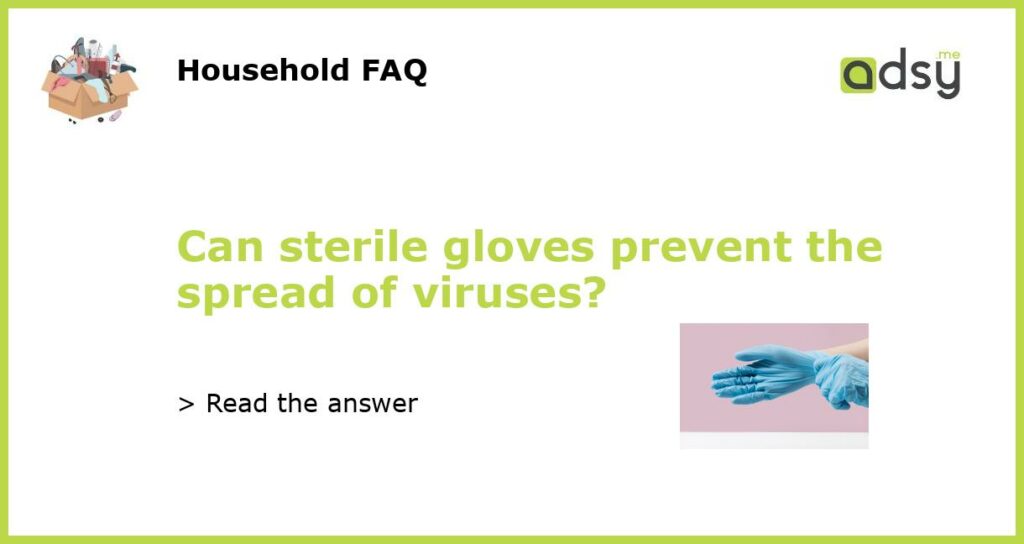Can Sterile Gloves Prevent the Spread of Viruses?
With the recent COVID-19 pandemic, the importance of personal protective equipment (PPE) in preventing the spread of viruses has become more evident than ever. Sterile gloves are an essential component of PPE, but can they prevent the spread of viruses? Let’s delve into the science to find out.
The Role of Sterile Gloves in Infection Control
Sterile gloves are commonly used in healthcare settings to minimize the risk of transmission of infectious agents. They form a barrier between the wearer’s hands and potential sources of contamination, such as bodily fluids, pathogens, and hazardous chemicals. The primary aim of wearing sterile gloves is to protect both the wearer and the patient from cross-contamination.
When used in conjunction with other preventive measures, such as proper hand hygiene, using gloves can help reduce the spread of viruses. However, it is crucial to understand that gloves alone are not sufficient to prevent the transmission of viruses.
The Limitations of Sterile Gloves
While sterile gloves provide an additional layer of protection, they have certain limitations when it comes to preventing the spread of viruses:
- Breaks in the glove material: Sterile gloves can develop tiny punctures or tears that are not visible to the naked eye. These breaks can compromise the integrity of the glove and allow viruses to pass through.
- Contamination during glove removal: Improper removal of gloves can increase the risk of contamination. Touching the exterior surface of the glove during removal can transfer any pathogens present to the hands.
- Extended glove usage: Prolonged usage of gloves can lead to moisture buildup inside the gloves, increasing the risk of bacterial or viral colonization. Additionally, gloves can act as a fomite, potentially transferring viruses from one surface to another.
The Importance of Proper Glove Usage
While the limitations of sterile gloves exist, their effectiveness can be maximized through proper usage:
- Choose the right glove type: Different glove materials have varying levels of permeability. Healthcare workers should select gloves appropriate for the task at hand, considering factors such as the type of virus, duration of contact, and potential exposure to chemicals.
- Perform hand hygiene before and after glove use: Washing hands with soap and water or using an alcohol-based hand sanitizer is crucial before donning gloves to minimize the risk of contamination. Hands should be thoroughly washed after glove removal to remove any potential pathogens that may have been transferred from the gloves.
- Change gloves between patients: Gloves should be changed after each patient encounter to prevent cross-contamination. Wearing the same pair of gloves across multiple patients can spread the virus from one person to another.
- Follow proper glove removal techniques: The correct technique for glove removal involves grasping the outside of one glove with the opposite gloved hand and peeling it off. The ungloved hand is then used to peel off the second glove by sliding fingers under the glove at the wrist. This technique minimizes the risk of touching the exterior surface of the gloves.
Sterile gloves play a vital role in infection control, but they are not foolproof in preventing the spread of viruses. While they provide an additional layer of protection, their effectiveness can be compromised by breaks in the glove material, improper glove removal, and extended usage. To maximize the effectiveness of sterile gloves, healthcare workers must choose the right glove type, practice proper hand hygiene, change gloves between patients, and follow correct glove removal techniques. However, it is important to note that gloves alone are not sufficient to prevent the transmission of viruses. They should be used in conjunction with other preventive measures, including frequent handwashing, wearing appropriate facial masks, and maintaining social distancing.






